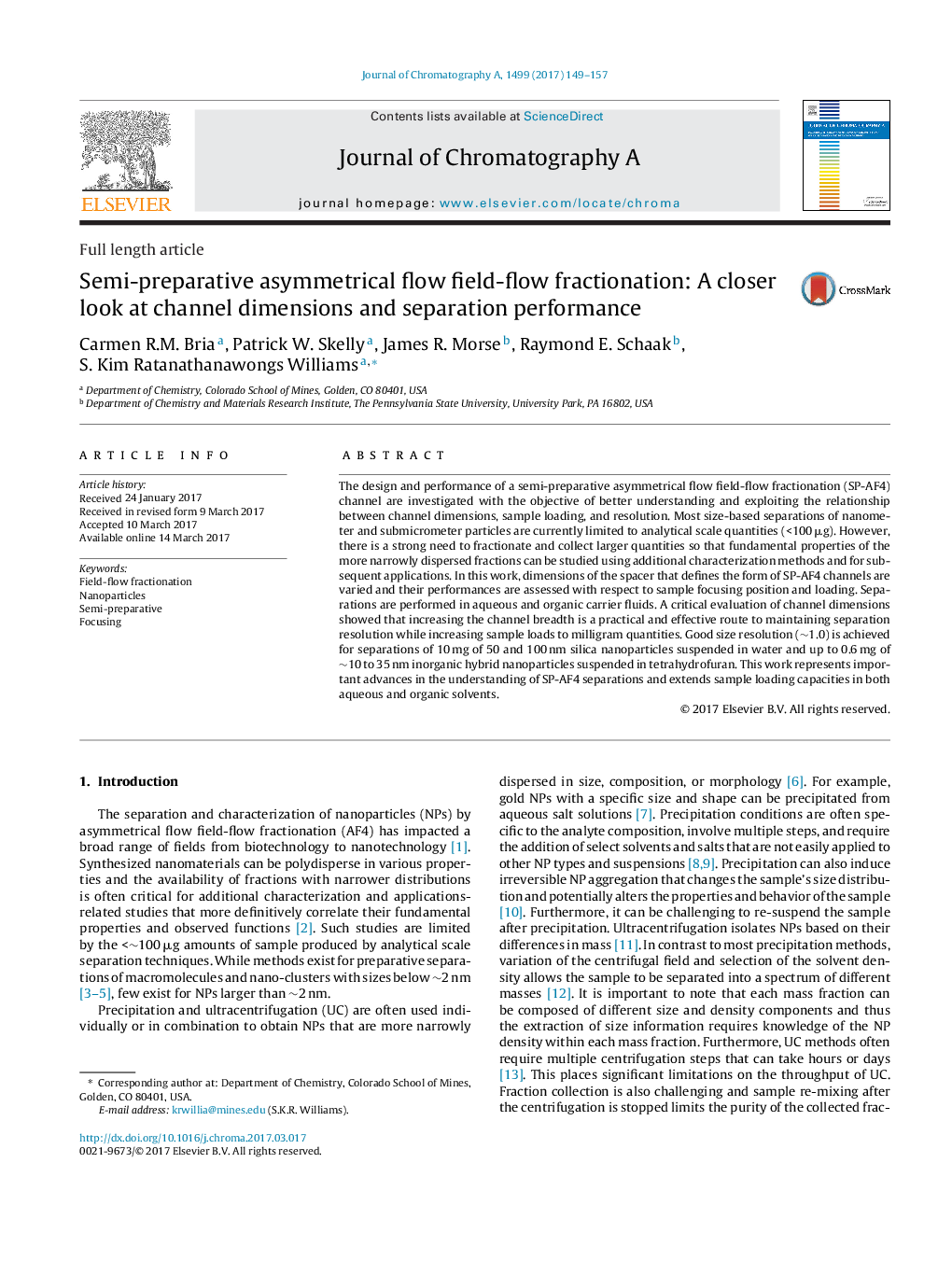| Article ID | Journal | Published Year | Pages | File Type |
|---|---|---|---|---|
| 5135175 | Journal of Chromatography A | 2017 | 9 Pages |
•SP-AF4 channel dimensions are studied via a theoretical/experimental approach.•Channel breadth has largest impact on sample loading and least impact on resolution.•Milligram quantities of silica nanoparticles are fractionated using aqueous SP-AF4.•The position of the focusing band is found to impact retention and resolution.•Separation of Pt-Fe3O4 nanoparticles is the first demonstration of organic SP-AF4.
The design and performance of a semi-preparative asymmetrical flow field-flow fractionation (SP-AF4) channel are investigated with the objective of better understanding and exploiting the relationship between channel dimensions, sample loading, and resolution. Most size-based separations of nanometer and submicrometer particles are currently limited to analytical scale quantities (<100 μg). However, there is a strong need to fractionate and collect larger quantities so that fundamental properties of the more narrowly dispersed fractions can be studied using additional characterization methods and for subsequent applications. In this work, dimensions of the spacer that defines the form of SP-AF4 channels are varied and their performances are assessed with respect to sample focusing position and loading. Separations are performed in aqueous and organic carrier fluids. A critical evaluation of channel dimensions showed that increasing the channel breadth is a practical and effective route to maintaining separation resolution while increasing sample loads to milligram quantities. Good size resolution (∼1.0) is achieved for separations of 10 mg of 50 and 100 nm silica nanoparticles suspended in water and up to 0.6 mg of ∼10 to 35 nm inorganic hybrid nanoparticles suspended in tetrahydrofuran. This work represents important advances in the understanding of SP-AF4 separations and extends sample loading capacities in both aqueous and organic solvents.
